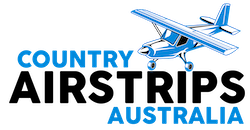Corowa NSW

Corowa in NSW is a substantial and historically significant river town. It is primarily a service centre for the rich agricultural lands on either side of the Murray River. The prosperous district is a mixed farming area with the cultivation of wool, cereals, and grapes. These are being complemented by an abattoir, sawmills and cellar doors.
It is also an important tourist region with activities on the Murray and at Lake Mulawa. Also excellent wineries tempt tourists to explore and try their delicious wines.
Discover a heritage-rich town full of outdoor adventure and epicurean delights in Corowa, the Birthplace of Federation.
Heritage & culture in Corowa NSW
In the 1860s Corowa was a thriving river port full of cargo-laden paddle steamers. Today, the river is popular for swimming, fishing, waterskiing and canoeing. Hire a bike from the Corowa Visitor Information Centre and explore a network of cycling tracks. These tracks reveal many historical sights and river scenery. The Information Centre is also the starting point for the Shearing the Rams Trail, which links sites important to famed landscape painter Tom Roberts.

Corowa Federation Museum NSW
Continue your discovery on the self-guided Corowa History Trail. Here you’ll learn about the town’s role in uniting Australia’s colonies in 1901 at the Corowa Federation Museum. Every year this momentous event is commemorated with music, food and wine at the Corowa Federation Festival.
The Corowa district was originally inhabited by the Bangerang people. Their tribal lands extended north to the Murrumbidgee River and along the Murray River from Howlong to Berrigan and south to Mansfield in Victoria. In the late 1880-90s, one of the members of this tribe, Tommy Mac Raewas encouraged to make sketches in pen and ink of various tribal activities and the tribe’s contact with white man. Some of his original work survives today as an important record of those activities.
First European Settlements in Corowa
European settlements began to spring up in the area following the explorations and reports of Hume and Hovell. Another explorer, Charles Sturt, is considered the first white person to have acquired land.
It is to the settlers, John Foord and John Crisp, that Corowa owes its existence. Foord took up land on the Victorian side of the river in 1850s and established the Wahgunyah Run. The boundaries extended from the Murray River to Black Dog and Indigo Creeks. He produced wheat and also became the flour miller, storekeeper, transporter, punt owner and bridge builder. In 1859 he purchased land on the New South Wales side and planned the township of North Wahgunyah, now known as Corowa.
Corowa’s Gold Rush
Corowa NSW had a rapid population growth due to the discovery of gold in nearby Beechworth in 1852. Wahgunyah became a river port, and the district supplied meat and grain to the goldfields. The Rutherglen goldfield was discovered in 1859, and although short-lived, added further impetus to the growth of the town. Around 1862 a toll bridge was constructed (near the present bridge) and later demolished in 1894. The present iron, John Foord Bridge, was built in 1892.

Tom Roberts painting Shearing the Rams – Corowa NSW
In 1889-1890 Tom Roberts’ famous painting Shearing the Rams was painted at Corowa from sketches and drawings he made in the shearing shed of Brocklesby Station. The shed once stood on the bank of the Murray where Alan Morris Park is now, at the junction of Brocklesby and River streets. The huge canvas was completed in 1890. The Argus newspaper of that year described how Tom Roberts –
‘went out to the great Australian river to learn it. He fixed himself on a station and all one spring he studied and made studies of the light, the atmosphere, the shed, the sheep, the men and the work…when all were done it was too late to begin seriously…’
Corowa played a role in the negotiations leading up to the creation of the Federation of Australia in 1901. In 1893, at Corowa, a conference was held which accepted the motion that all future Federation conference delegates should be elected by the people, instead of being representatives of the various governments, and that they should draw up a constitution and submit it to the people for approval.

